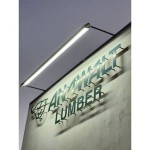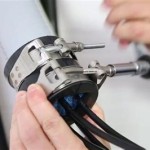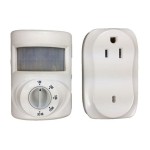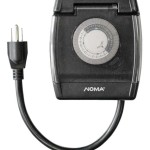IESNA Outdoor Lighting Distribution Types
The Illuminating Engineering Society of North America (IESNA) has established standardized classifications for outdoor lighting distributions. These classifications, based on the shape and direction of the light emitted, help lighting designers and engineers select the appropriate luminaire for a specific application. Understanding these distribution types is crucial for achieving optimal illumination, minimizing light pollution, and maximizing energy efficiency.
Type I - Very Short
Type I distributions emit light in a circular or square pattern directly beneath the luminaire. This concentrated distribution is ideal for applications requiring high illuminance levels in a limited area, such as pedestrian walkways and building entrances. Type I distributions are characterized by a narrow beam angle and are often used with low mounting heights.
Type II - Short
Type II distributions offer a slightly wider light spread compared to Type I, providing illumination along roadways and sidewalks. The light pattern is typically rectangular, with the longer dimension aligned with the roadway. This distribution is suitable for areas where lateral illumination is necessary while minimizing light trespass onto adjacent properties.
Type III - Medium
Type III distributions provide a wider, more symmetrical light pattern than Type II. This distribution is suitable for wider roadways or areas where illumination is required on both sides of the luminaire. Type III is often employed in parking lots, general area lighting, and larger pedestrian areas where a more uniform light distribution is desired.
Type IV - Long
Type IV distributions project light over a long, narrow area. This makes them ideal for illuminating roadways with high mast lighting or long, narrow pathways. The elongated light pattern minimizes spill light and glare while providing adequate illumination along the intended area.
Type V - Square
Type V distributions offer a symmetrical, square or circular light pattern. This distribution is generally used for area lighting where uniform illumination in all directions is required. Typical applications include parking lots, plazas, and recreational areas. Type V distributions are effective in minimizing shadows and creating a well-lit environment.
Type VS - Semi-Cutoff
Type VS distributions, or semi-cutoff distributions, represent a category focused on controlling light trespass and glare. These luminaires direct light downward and minimize upward light spill. While not a distinct geometric shape like other types, the VS designation emphasizes the luminaire's ability to reduce light pollution. They are frequently used in environmentally sensitive areas and where minimizing sky glow is a priority.
Type C - Cutoff
Type C, or cutoff distributions, provide even stricter control of light trespass and glare compared to Type VS. These luminaires feature sharp cutoffs, typically at angles above 90 degrees, minimizing upward light projection. Type C distributions are crucial for preserving dark skies and reducing the impact of artificial light on nocturnal ecosystems. They are commonly specified in areas with stringent lighting regulations.
Understanding the IESNA Classification System
The IESNA classification system provides a standardized framework for understanding and specifying outdoor lighting distributions. These classifications help ensure that the chosen luminaire is appropriate for the intended application. Proper selection based on these types minimizes light pollution, improves visibility, and optimizes energy consumption.
Factors Influencing Distribution Selection
Several factors influence the selection of an appropriate IESNA distribution type. These factors include the geometry of the area to be illuminated, the mounting height of the luminaire, the required illuminance levels, and local regulations regarding light trespass and glare. A thorough understanding of these factors is essential for effective lighting design.
Advancements in LED Technology and Distribution Control
Advancements in LED technology have enabled greater control over light distribution. LED luminaires offer improved efficacy and the ability to achieve precise light patterns, allowing for more efficient and targeted illumination. This increased control further enhances the applicability of IESNA distribution types, enabling designers to tailor lighting solutions to specific needs.
The Role of Lighting Software and Design Tools
Lighting design software plays a crucial role in visualizing and analyzing the distribution patterns of different luminaires. These tools allow designers to simulate lighting scenarios and optimize luminaire placement for uniform illumination and minimized light pollution. Utilizing such software is essential for creating effective and efficient lighting designs.
The Importance of Proper Luminaire Selection
Selecting the correct IESNA distribution type is paramount for optimizing lighting performance and minimizing negative impacts. Using the wrong distribution can lead to wasted energy, excessive glare, and unwanted light trespass. Careful consideration of the IESNA classifications is crucial for achieving sustainable and effective lighting solutions.
Addressing Light Trespass and Glare
Light trespass and glare are significant concerns in outdoor lighting. The IESNA distribution classifications, particularly the cutoff and semi-cutoff types, play a critical role in mitigating these issues. Properly selected luminaires can significantly reduce unwanted light spill onto adjacent properties and minimize glare that can impact drivers and pedestrians.
Evolving Standards and Best Practices
IESNA standards and best practices for outdoor lighting continue to evolve. Staying informed about the latest recommendations and advancements in lighting technology is essential for ensuring that lighting designs are efficient, effective, and environmentally responsible. Continual learning and adaptation are crucial for professionals in the lighting industry.

Light Distribution Choosing Gui For Outdoor Lighting Lightide

Light Distribution Choosing Gui For Outdoor Lighting Lightide

How To Choose Light Distribution Types I Ii Iii Iv V Newlight Energy
Iesna Outdoor Lighting Distribution Types I V Scientific Diagram
Iesna Light Distribution Types

Iesna Lighting Distribution Types And Their S Zgsm

What Are Light Distribution Types Defined By Iesna And Nema Penglight

Iesna And Nema Light Distribution Types Super Bright Leds

Iesna And Nema Light Distribution Types Super Bright Leds

What Are Light Distribution Types Defined By Iesna And Nema Penglight
Related Posts







